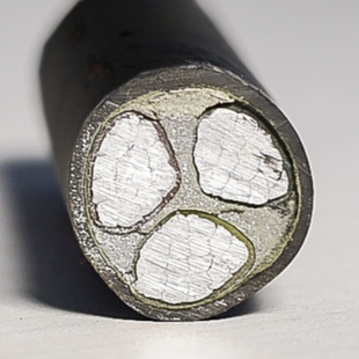
A power cable is a cable used to transmit or distribute high-power electrical energy in a power system.
With the development of the petrochemical industry worldwide, plastic insulated power cables have become an important variety in low-voltage power cables due to their simple manufacturing process and convenient construction and maintenance.
However, in the process of plastic insulation extrusion, bumps, scratches, crushing, breakdown and other defects are inevitable.
In order to ensure fixed length production, reduce waste, and ensure that the electrical properties of the finished cable meet the standard requirements, it is necessary to find suitable insulation. Damage repair method.
The heat welding method uses a suitable power soldering iron to fuse the insulation with a soldering iron.
1.1 Low-voltage PVC insulated cable
Polyvinyl chloride materials are thermoplastic materials, and should be heat-welded when repairing cable insulation.
In order to ensure and enhance the electrical and mechanical properties of the repaired area, a single layer of overlapping wraps is applied to the repaired area with insulating tape, and the wrapping is to be flat.
1.2 Low-voltage XLPE insulated cable
The crosslinked polyethylene material is a thermosetting material, and the insulating molecules are reticulated after the silane is crosslinked.
Before the insulated core boiled water cross-linking process, the insulation damage repair is repaired by hot welding, and then the repaired portion is wrapped with a transparent tape to prevent the repair from falling off.
After the insulated core boiled water cross-linking process, the insulation layer is damaged.
It should be repaired by heat welding first, and then overlapped with high-pressure self-adhesive tape with a pressure rating of 35kV, and the high-pressure tape wrapping must be flat.
The heat shrinkable tube repair method is to put a heat shrinkable tube of a suitable size on a defect point, heat shrinkage and tight defect.
Regardless of whether the insulating material is made of thermoplastic polyvinyl chloride or thermosetting cross-linked polyethylene.
The insulated core with a nominal cross-section of less than 10 mm2 should be repaired with a heat-shrinkable tube.
After the heat-shrinkable tube is repaired, it is wrapped with insulating tape.
The hot soldering repair method is repaired by tools such as electric soldering iron, and the performance of the insulating layer can reach the complete cable level, but the repairing process is relatively complicated, requiring the operator to have a high technical level.
For cores with a small cross section, if repaired by heat welding, it is not easy to guarantee the quality of repair, and heat shrinkable tube repair method should be adopted.
In order to ensure that the electrical properties of the repaired insulated core meet the standard requirements, the insulation layer spark test and the finished voltage 3.5kV/5min withstand voltage test must be performed.
The above repair method is only applicable to a small range of insulation damage.
For serious defects such as scratches, crushes, and bumps, in order to ensure product quality, repairs must not be made.